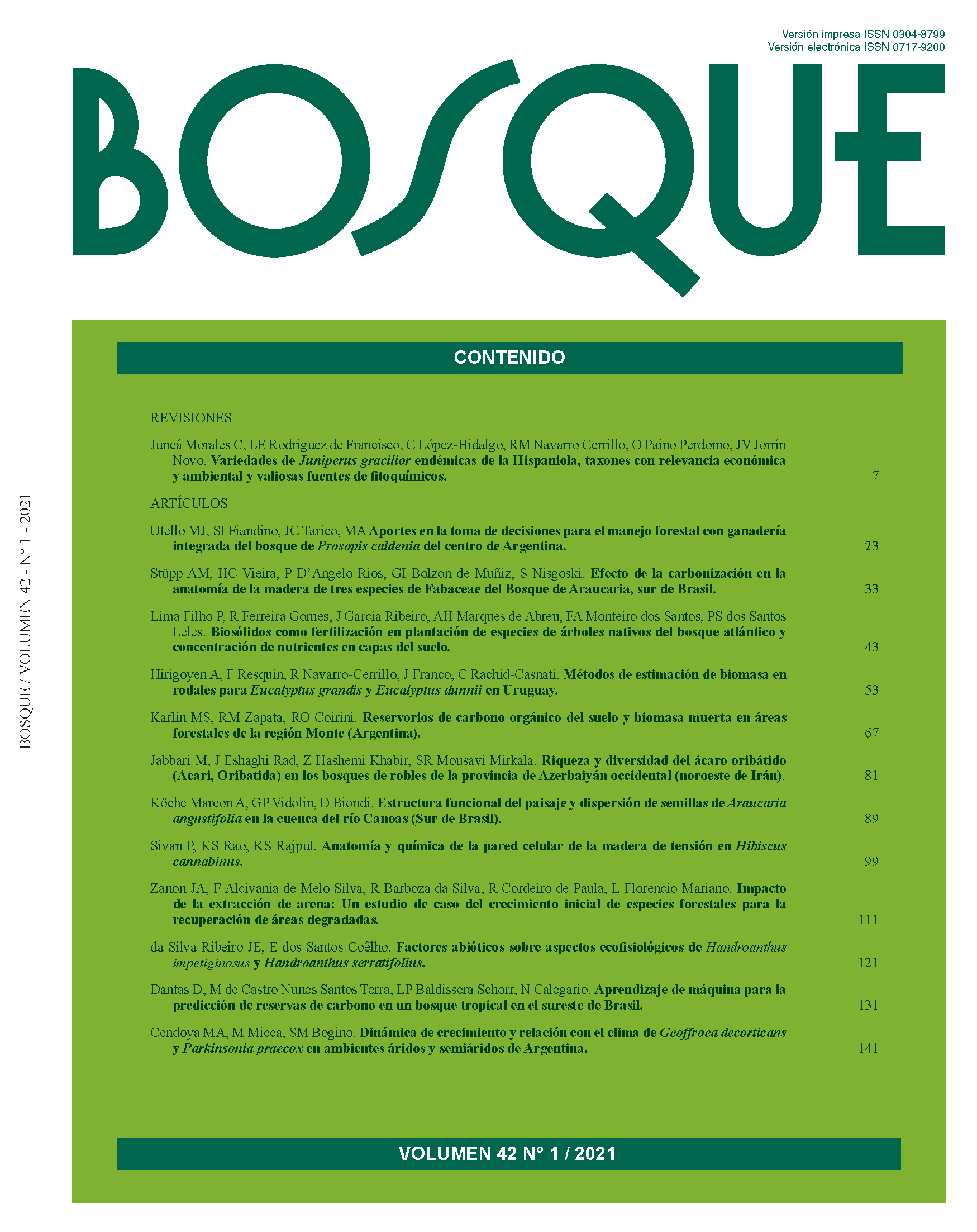Contributions in decision-making for forest management with integrated livestock in the Prosopis caldenia forest of central Argentina
Main Article Content
Abstract
In Prosopis caldenia forests, currently, the main activity is cattle rearing. Almost all research focuses on the herbaceous component, losing sight of the value of the forest resource and the implications of its management on the forage resource. The objective of this work is to evaluate forage availability based on forest cover, apply a model of diameter classes that allows predicting the evolution of forest mass and establish the relationship between the evolution of forest cover and forage availability. For this, forage availability was measured under and outside the projection of woody canopies, in two covers: open (10-15 m2 ha-1) and closed (25-30 m2 ha-1). Afterwards, through a model of diameter classes, it was sought to predict how the parameters of forest mass would evolve. The results of the herbaceous component showed that, up to 15 m2 ha-1 of basal area (BA), there is no significant decrease in forage availability (approximately 2,700 kg ha-1). Regarding the forestry component, in a projected period of 10 years, 6.68 m3 ha-1 would be obtained, representing 9.61 % of total standing volume. The relationship between canopy coverage and BA showed increase of 3.18 % per BA unit (R2 = 0.96). This would allow projecting their participation by diameter class to propose improvement cuts that allow conducting these systems at coverage levels that do not significantly affect forage yield.

